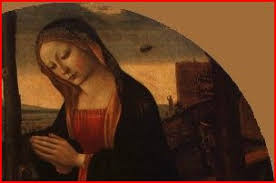Almost exactly two years ago, right in the heart of Manhattan, Luciano Garbati’s sculpture Medusa With the Head of Perseus was unveiled. The statue depicts exactly what is promised by its name: a 7-foot-tall bronze Gorgon, stark naked, holding up the Greek hero’s severed head in a rote inversion of the ancient tale. Inevitably, it was met with profound ambivalence; many claimed the triumphant lady of serpents as a #MeToo mascot (her glower is aimed directly at the courthouse where Harvey Weinstein stood trial), while others denounced the statue as pornographic. (Editor’s note: They’re right). What we couldn’t have known at the time was that it was merely a precursor to a now-accelerating movement in our society’s mythopoetic fabric—a movement which will shortly produce season 2 of Amazon’s Rings of Power, in which Galadriel (Tolkien’s analogue for the Blessed Virgin) will almost certainly become romantically involved with Sauron (his analogue for the father of lies).
According to Ovid, it was the Virgin Goddess Athena, Patroness of Wisdom, who transformed Medusa into the monstrosity we know today. The lady’s hair, once beautiful, became a nest of vipers; anyone who gazed upon her became trapped in her lair forever, hard as stone. Chastity and wisdom thus generate the enduring shadow-self of infohazard and lust—in short, pornography. The head, representing knowledge, becomes the seat of the very creature who deceived our first Mother in the Garden: a dark prophecy fulfilled by the universal library of the Internet. To investigate this subject, even with the holiest of intentions, is to open oneself to a deluge of temptation through the Palantir of one’s computer screen.
G.K. Chesterton once remarked,
“A young man may keep himself from vice by continually thinking of disease. He may keep himself from it also by continually thinking of the Virgin Mary. There may be question about which method is the more reasonable, or even about which is the more efficient. But surely there can be no question about which is the more wholesome.” (Heretics, John Lane Company, 1905.)
In the original myth, Perseus defeated Medusa by gazing only at her reflection in the Shield of Athena; likewise, treading in his sandal-prints, we can safely study the rising tide of cybernetic concupiscence only by its shadow in the visage of Our Lady. Medusa (or pornography) is, after all, only the hideously distorted reflection of Mary in the first place.
Evil can’t create. It relies entirely on the Good to produce fresh virtue in every generation—which, of course, it will then attempt to corrupt. Even the most cursory perusal of recent “academic” trends in North America will highlight the pervasion of this attempt, all the way down to the elementary-school level; and various pundits have been predicting this for half a decade. How did we know? Simply by looking at the Blessed Virgin. Every virtue that makes her who and what she is, will inevitably come under attack by the forces of perversion—wisdom, strength, mother-love, and piety—but above all, innocence. And by this time, only one demographic is still reliably innocent.
So: How do we fight? First of all, we need to know our enemy. No one has officially revealed that Galadriel and Sauron will become sexually involved in Rings of Power; this is simply a prediction. But make no mistake, the Blessed Virgin will come more and more under assault as the days go by, with less and less pretext. Consider this latest ripple of the coming tsunami: M&Ms have just released a limited edition series of candy wrappers, ostensibly in homage to country singer Kacey Musgraves, one of which very clearly depicts the green M&M as the Queen of Heaven—crown of stars, shining dove, and all. It’s only a silly little thing, why take offense? Well, because it’s the most insidious pincer in the Enemy’s attack, slipping in from below the rational level to undermine the instinct of reverence in our hearts.
We’d do well to pay attention to what’s coming.

